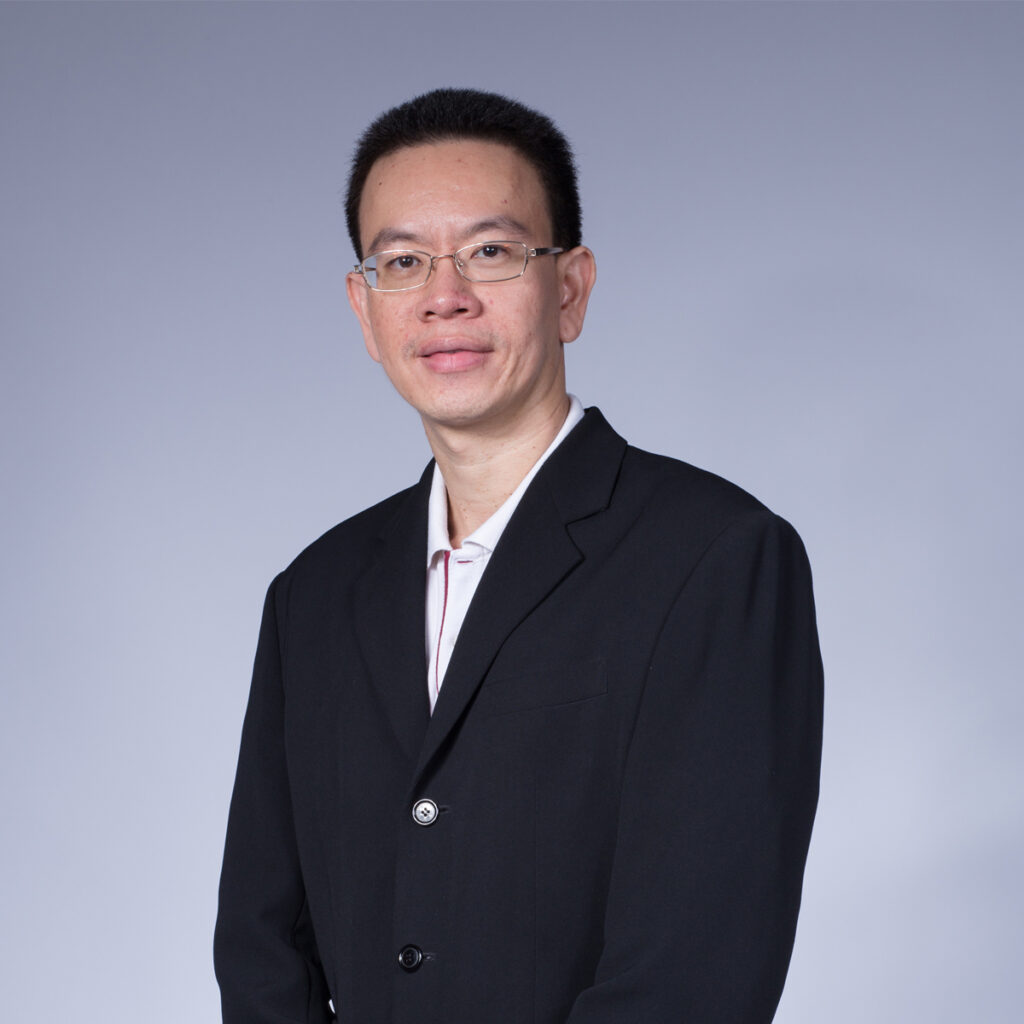
Assoc. Prof. Thavatchai Tayjasanant
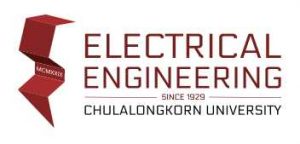
Railway power systems (RPSs) are a special case of electrical power systems. Their final objective is to transport passengers and goods according to a schedule [1]. Most electrical loads are electric trains which are varying loads and they can supply power back to a grid when braking. Fig. 1 illustrates interconnections of railway power systems to other power systems [1]. Electrical system operators (ESOs) are in charge of balancing generation and demand and operate the transmission grid. Railway-side distributed generation (RDG) are railway power plants and they can be connected to RPSs. These RPSs can be renewable energy sources because RESs are connected increasingly to an electrical power system due to an attempt to reduce carbon emissions. Renewable energy sources such as solar, wind and biomass energy are popular choices. Energy storage systems (ESSs) are also utilized in RPSs to store temporal excess of power from regenerative braking and use later. As a result, an integration of more RESs to railway systems will be a win-win scenario for RPSs.
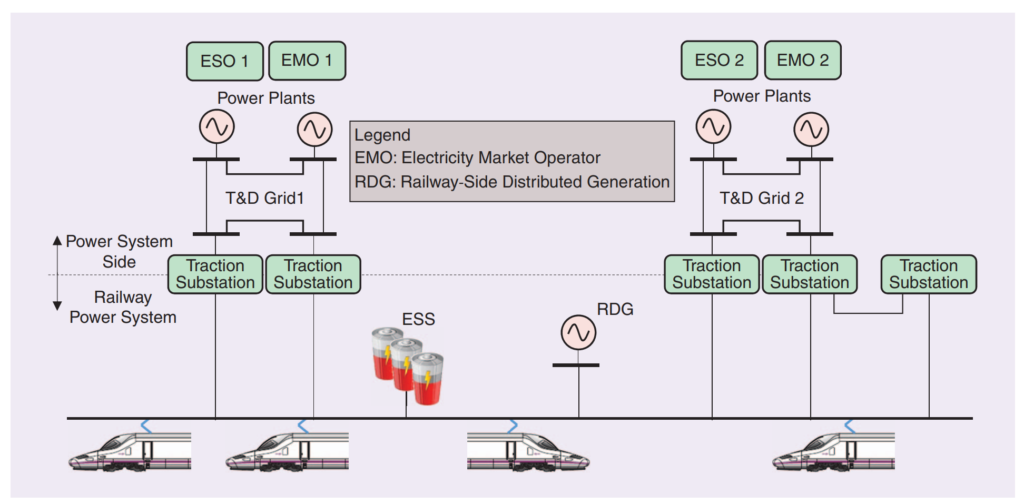
Fig. 1 Interconnections of railway power systems to other power systems
One of the most trends in railway traction is the application of RESs as substitutes for fossil fuels. The combination of RESs and ESSs can be connected to railway traction power supply systems (TPSSs) directly or by distribution systems via power electronic devices as seen in Fig. 1. The important issue for RESs integration is to maintain the balance between the generation and the train demand [2]. In addition, RESs integration should avoid changing the original structure of TPSSs. Five generic configurations of TPSS coupled with RESs are shown in Fig. 2 [2]. Fig. 2a shows AC-TPSS with on-site distributed RESs. Distributed wind farms and PV systems are connected at distribution network via appropriate power converters. Fig. 2b shows AC-TPSS with integrated distributed RESs. Distributed RESs are connected to TPSS feeders via appropriate power converters. The matching of frequency, amplitude and phase angle must be satisfied and the matched converters and transformers should be applied. Energy management can be used to optimize the power flow of TPSSs. The energy flow between electrical grid and neighboring railway substations can also be coordinated for this configuration. Fig. 2c shows AC-TPSS based MP-RPC with RESs. This configuration uses a new multi-port railway power converter (MP-RPC) connected to the feeder to improve power quality and integrate RESs. However, the application of MP-RPC is limited to the large volume and high cost. Fig. 2d shows AC-TPSS based co-phase TPSS with RESs. The high cost of construction and complicated process control is the major obstacle for this configuration. Fig. 2e shows DC-TPSS with RESs. This configuration is the simple two-terminal DC-TPSS scheme without synchronization problems of RESs integration. Most of RESs can be connected directly without appropriate converters like in AC-TPSS. The main drawbacks are relatively short transmission distances between two power supply stations and high transmission losses.
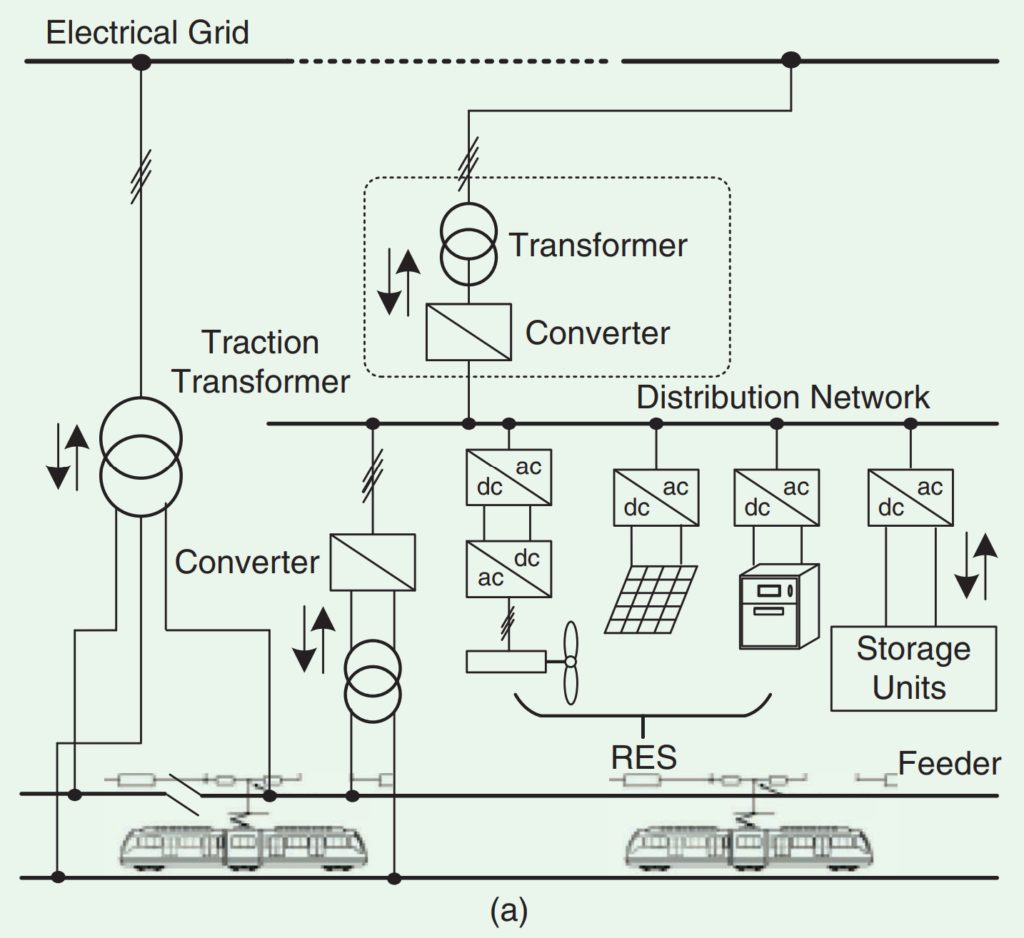
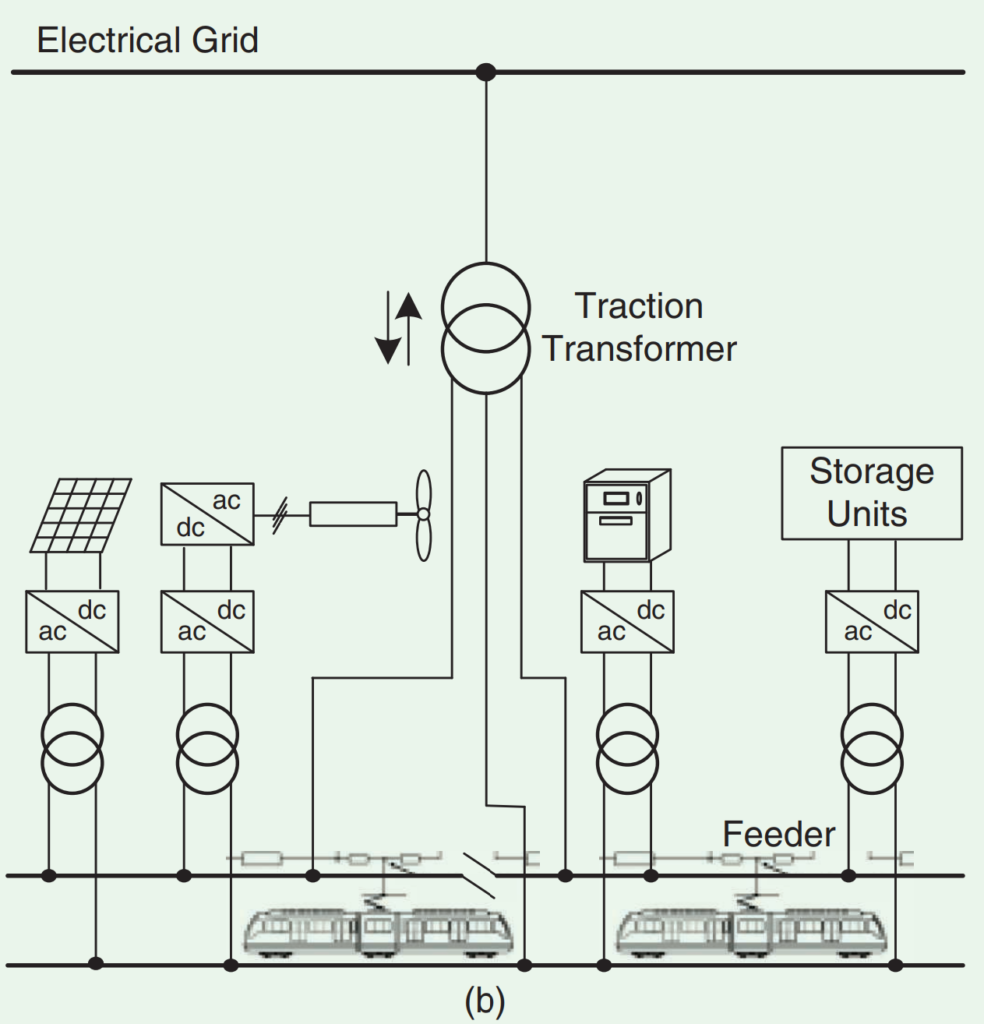
(a) AC-TPSS with on-site distributed RESs.
(b) AC-TPSS with integrated distributed RESs.
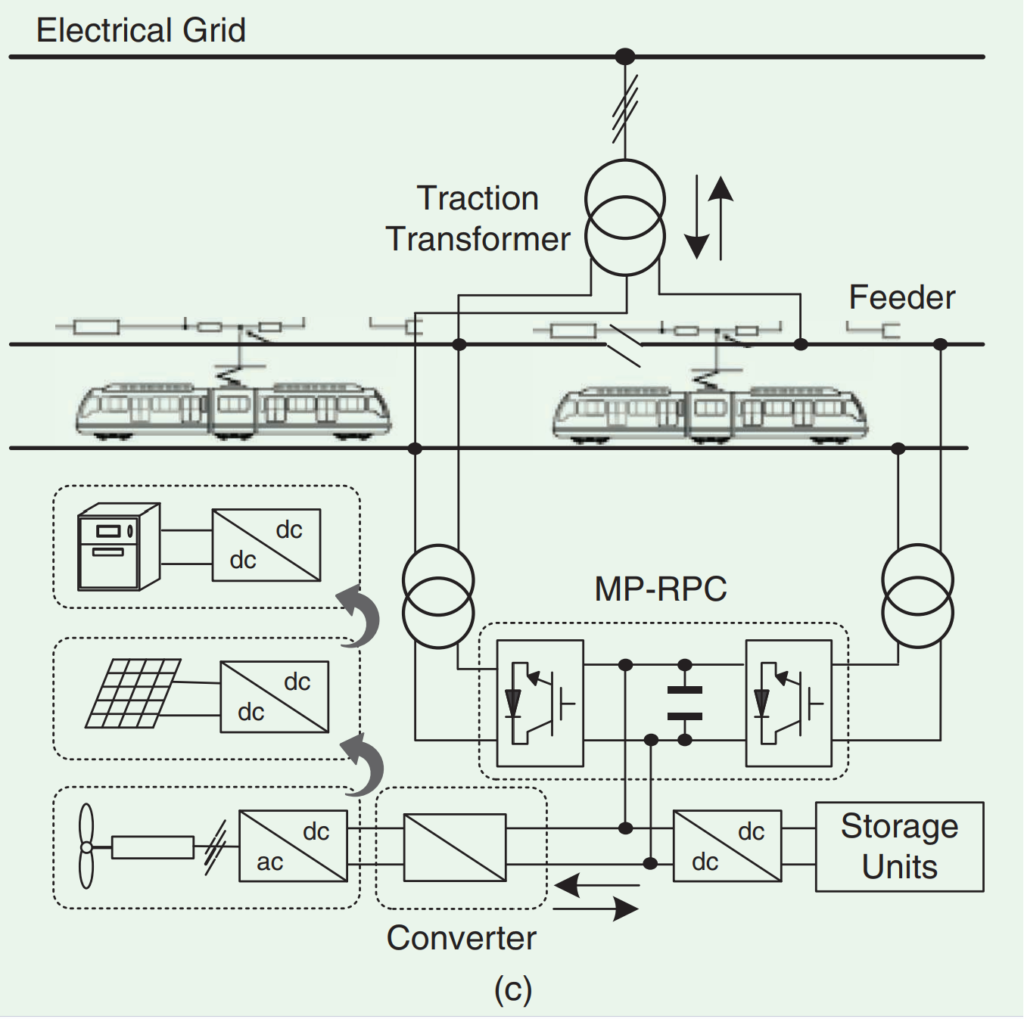
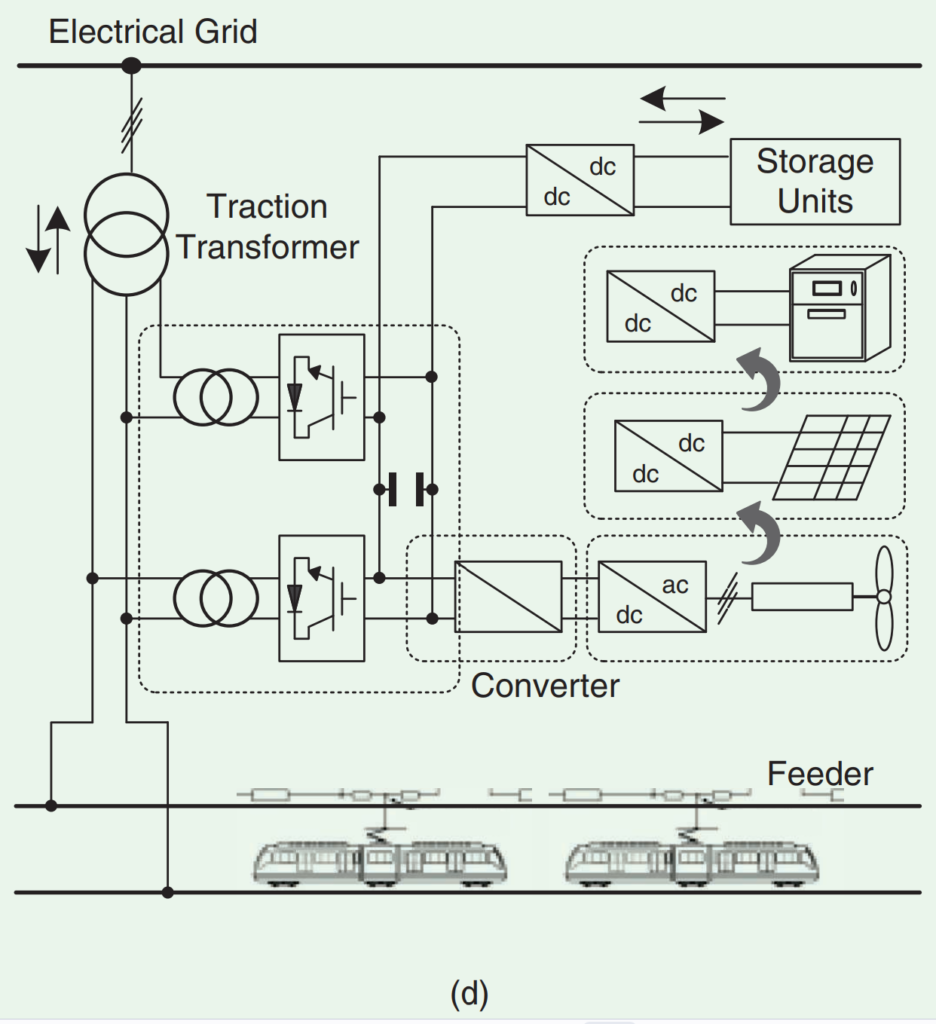
(c) AC-TPSS based MP-RPC with RESs.
(d) AC-TPSS based co-phase TPSS with RESs.
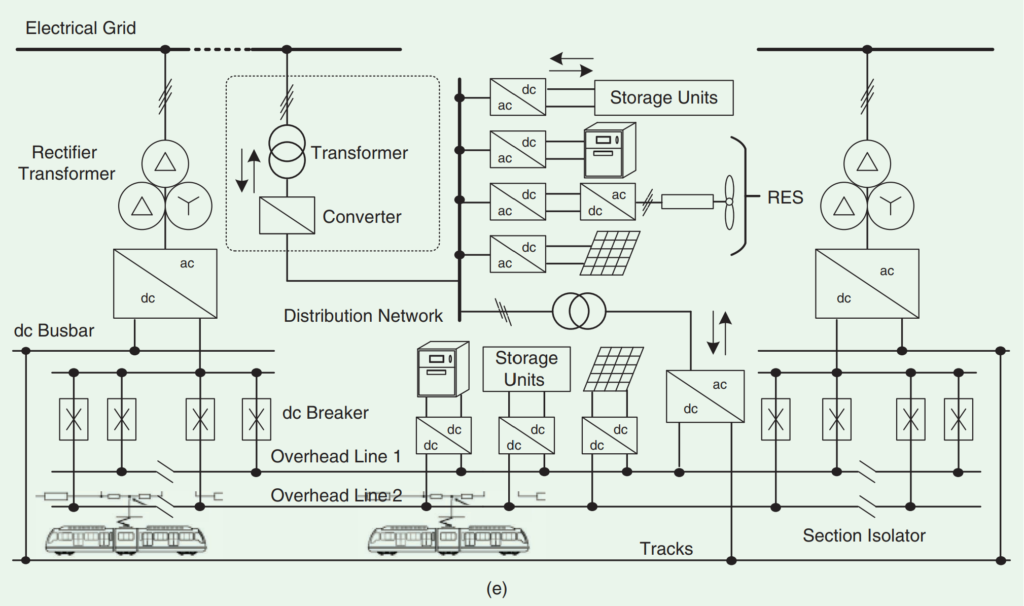
(e) DC-TPSS with RESs.
Fig. 2 The TPSS topologies with RESs.
The current railway system can change from the energy mode from single power supply to multiple energy supply through RESs, from passive load absorption to active multiple load coordinated mode, from unidirectional power flow to bidirectional power interacted mode to be the next-generation of railway system in order to satisfy business demands for energy efficiency, carbon minimization and RESs integration [2]. Railway energy management system (REMS) with optimized management methods will play an important role for such a transition. MERLIN project which started on 2012 is one of examples to investigate and demonstrate the viability of an integrated REMS in European electric mainline railway systems [3]. The architecture of the system, developed according to the Smart Grid Architecture Model (SGAM) which consists in the optimization of the energy flow through the railway system at different levels: Day Ahead Optimization (DAO), Minute Ahead Optimization (MAO) and Real Time Operation (RTO) [3]. It was expected to have 10% overall reduction of energy consumption.
References
[1] Eduardo Pilo de la Fuente, Sudip K. Mazumder and Ignacio G. Franco, “Railway Electrical Smart Grids,” IEEE Electrification Magazine, Volume 2, Issue 3, September 2014.
[2] Bonan An, Yong Li, Josep M. Guerrero, Wei-Jen Lee, Longfu Luo and Zhixue Zhang, “Renewable Energy Integration in Intelligent Railway of China: Configurations, Applications and Issues,” IEEE Intelligent Transportation Systems Magazine, Volume 13, Issue 3, Fall 2021.
[3] Sara Khayyamim, Antonello Monti, Valeria Bagliano and Isabelle De Keyzer, “Making energy management in the railway system smarter,” European Railway Review, 2015.